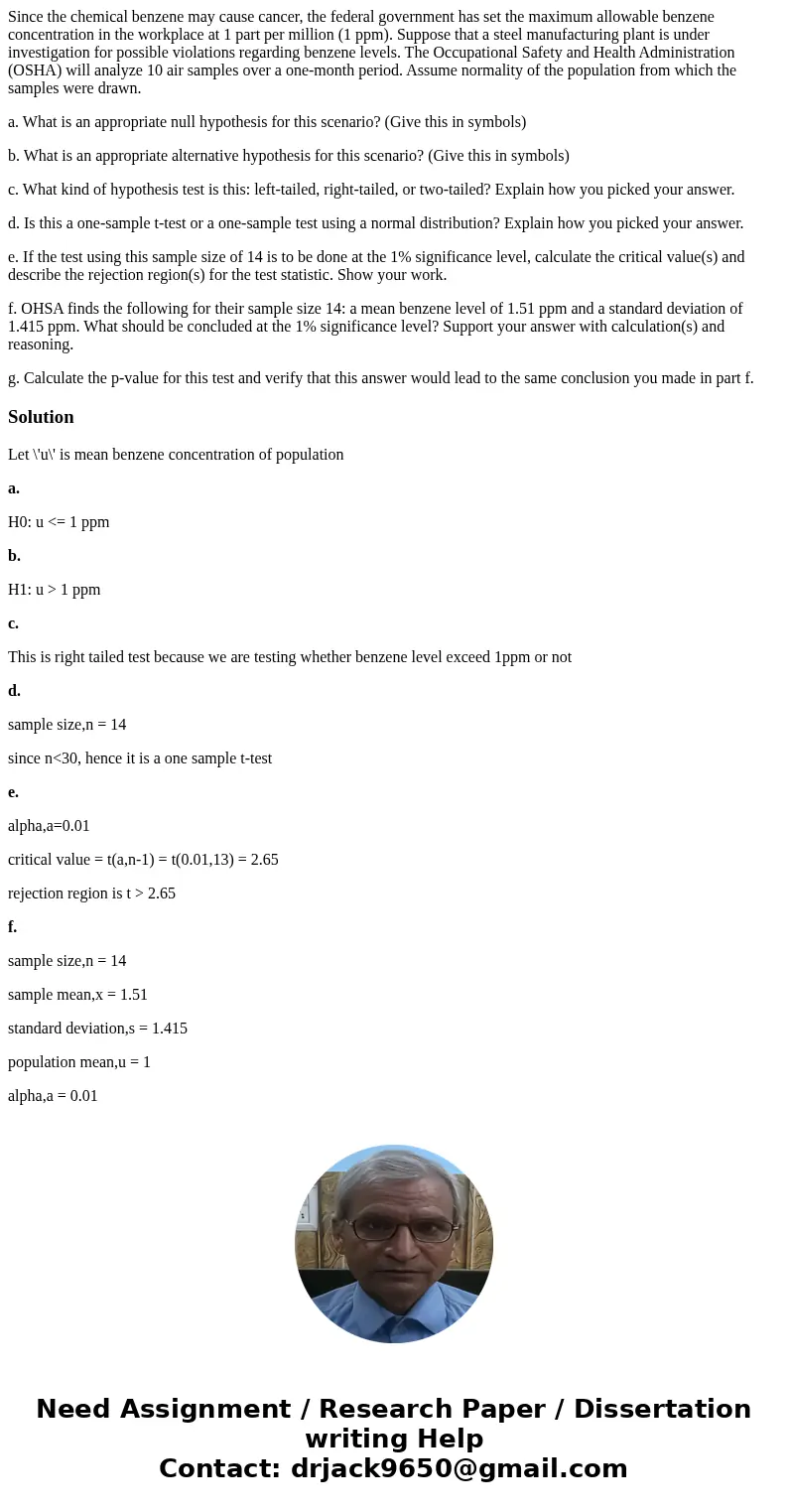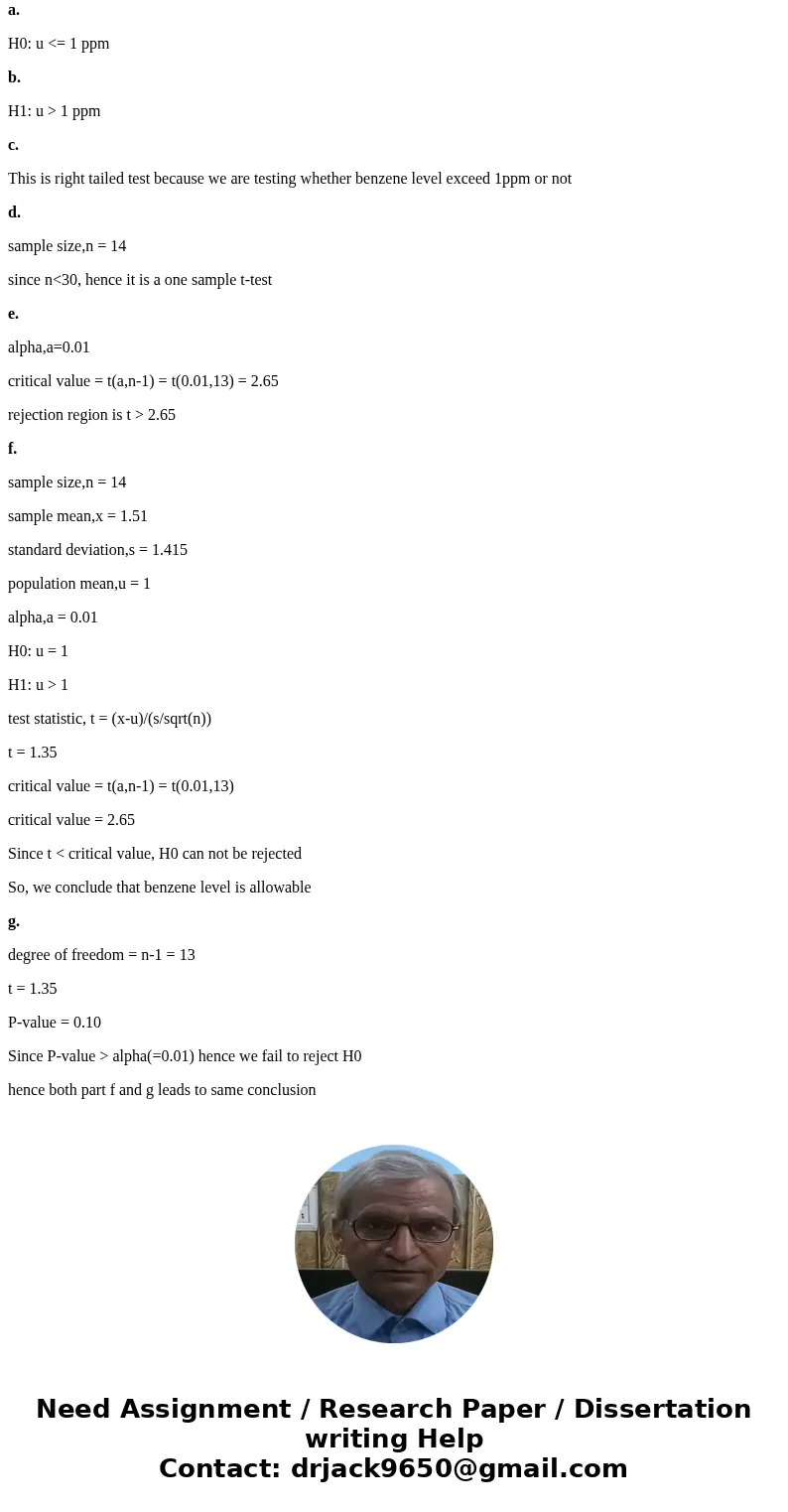Since the chemical benzene may cause cancer the federal gove
Since the chemical benzene may cause cancer, the federal government has set the maximum allowable benzene concentration in the workplace at 1 part per million (1 ppm). Suppose that a steel manufacturing plant is under investigation for possible violations regarding benzene levels. The Occupational Safety and Health Administration (OSHA) will analyze 10 air samples over a one-month period. Assume normality of the population from which the samples were drawn.
a. What is an appropriate null hypothesis for this scenario? (Give this in symbols)
b. What is an appropriate alternative hypothesis for this scenario? (Give this in symbols)
c. What kind of hypothesis test is this: left-tailed, right-tailed, or two-tailed? Explain how you picked your answer.
d. Is this a one-sample t-test or a one-sample test using a normal distribution? Explain how you picked your answer.
e. If the test using this sample size of 14 is to be done at the 1% significance level, calculate the critical value(s) and describe the rejection region(s) for the test statistic. Show your work.
f. OHSA finds the following for their sample size 14: a mean benzene level of 1.51 ppm and a standard deviation of 1.415 ppm. What should be concluded at the 1% significance level? Support your answer with calculation(s) and reasoning.
g. Calculate the p-value for this test and verify that this answer would lead to the same conclusion you made in part f.
Solution
Let \'u\' is mean benzene concentration of population
a.
H0: u <= 1 ppm
b.
H1: u > 1 ppm
c.
This is right tailed test because we are testing whether benzene level exceed 1ppm or not
d.
sample size,n = 14
since n<30, hence it is a one sample t-test
e.
alpha,a=0.01
critical value = t(a,n-1) = t(0.01,13) = 2.65
rejection region is t > 2.65
f.
sample size,n = 14
sample mean,x = 1.51
standard deviation,s = 1.415
population mean,u = 1
alpha,a = 0.01
H0: u = 1
H1: u > 1
test statistic, t = (x-u)/(s/sqrt(n))
t = 1.35
critical value = t(a,n-1) = t(0.01,13)
critical value = 2.65
Since t < critical value, H0 can not be rejected
So, we conclude that benzene level is allowable
g.
degree of freedom = n-1 = 13
t = 1.35
P-value = 0.10
Since P-value > alpha(=0.01) hence we fail to reject H0
hence both part f and g leads to same conclusion


 Homework Sourse
Homework Sourse